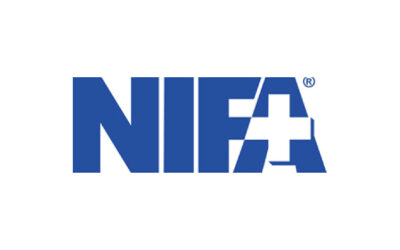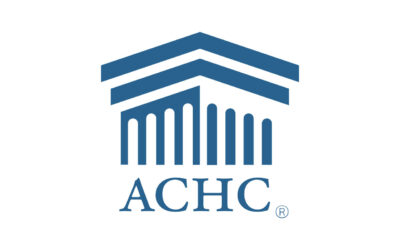
By James X. Stobinski
I recently had the opportunity to speak with long-time colleague Peter Graves. He is well known in perioperative nursing. He has worked extensively in health care associated industries. He also has experience in surgery research. Pete shared that he had recently been part of a team which had published, “A Review of the Evidence on the Role of Floors and Shoes in the Dissemination of Pathogens in a Healthcare Setting.” Our brief discussion spurred me to author this column. I would like to offer two thoughts which came to me after this conversation.
The first thought is that our specialty of perioperative nursing has many opportunities for further research. Consistent with current trends in nursing education, we have more nurses pursuing Doctor of Nursing Practice (DNP) degrees versus the research-focused Ph.D. degree. “The Nursing Workforce Fact Sheet” from the American Association of Colleges of Nursing (AACN, 2023) informs us that as of 2022, “… 17.4% of … registered nurses held a master’s degree and 2.7% held a doctoral degree as their highest educational preparation.”
We do not have reliable data on the numbers of Ph.D.s in the perioperative specialty. I do feel confident in stating that we have less than what is needed to meet the opportunity for perioperative-related research. This brings me to the second main point of this article. While Ph.D.s may be needed on research teams, there are many opportunities for perioperative nurses to participate in research. A case in point is Peter’s career; his highest earned degree is a Bachelor of Science, and he has been a notable contributor to the advancement of surgery-related research. Our perioperative specialty can do much more in research. Our perspective is valuable and not all researchers need to be prepared at the doctoral level.
The reference citation for the article in which Pete was part of the team of authors follows below. This literature review was published in the journal Surgical Infections. This points out the value of literature review articles in establishing the body of knowledge for surgical care and perioperative nursing, but also highlights the diversity of journals which may be suitable for perioperative-related articles. Not all journals are research centric as some are written for a broader audience. Perioperative nurse authors have many options. In the reference list, I document some of the recent journals which have published perioperative nursing content to include original research.
In example, the Journal of Perianesthesia Nursing (JOPAN) frequently publishes original research, and the editors are receptive to perioperative content. With a previous employer, I had the opportunity to write on professional development topics which are well-suited for the Journal of Continuing Education in Nursing. The International Journal of Nursing Studies is one of the top rated nursing journals in the world and they also publish perioperative research. A case in point is the work of the Australian researcher Brigid Gillespie with her publications on the PPCS-R instrument used specifically in perioperative nursing competency assessment. These are four suggestions for journals suitable for perioperative nursing content.
Perioperative nurses can also contribute to research efforts with volunteer service as a reviewer. I have volunteered in that service for the publication Perioperative Care and Operating Room Management (PCORM). This is an international, multidisciplinary journal which welcomes original research articles. My take home message is that there are many opportunities in perioperative nursing research and in publishing. If you, like my colleague Peter Graves, are motivated for this type of work I hope that you find the thoughts and suggestions I have presented this month to be useful.
To learn more about these updated guidance documents and other AORN guidelines for perioperative practice, visit https://aornguidelines.org/guidelines?bookid=2260.
– James X. Stobinski, Ph.D., RN, CNOR, CNAMB(E), CSSM(E), is the director of education with the National Institute of First Assisting.
References
American Association of Colleges of Nursing. (2023). Nursing Workforce Fact Sheet. https://www.aacnnursing.org/news-data/fact-sheets/nursing-workforce-fact-sheet
Cramer, E, Stucky, C, Stobinski, JX, Wymer, J. & Boyle, D. (2022). Differences in Perioperative Nurse Job Satisfaction by Specialty Certification Status. Journal of Perianesthesia Nursing (JOPAN). DOI: 10.1016/j.jopan.2022.04.018
Kinlaw, T., Stobinski, J.X. & Dunn, D. (2023). Using Innovation in Credentialing to Foster Meaningful Transitions to Practice and Support Continuing Professional Development. Journal of Continuing Education in Nursing. 54(9):413-420. doi: 10.3928/00220124-20230816-18. Epub 2023 Sep 1.
Limper, H. M., Sier, A., Warye, K., Spencer, M., Graves, P., & Edmiston, C. E. (2024). A Review of the Evidence on the Role of Floors and Shoes in the Dissemination of Pathogens in a Healthcare Setting. Surgical Infections, 25(1), 46–55. https://doi.org/10.1089/sur.2023.194
Maio, S. Stobinski, JX, & Brigid M. Gillespie, BM (2023). Psychometric evaluation of the United States-adapted Perceived Perioperative Competence Scale-Revised: A national survey, International Journal of Nursing Studies Advances, doi: https://doi.org/10.1016/j.ijnsa.2023.100173









